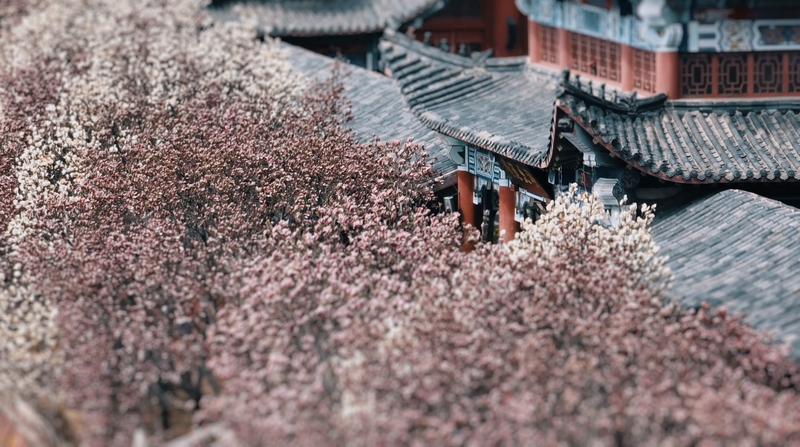As winter gives way to warmer days in Qinhuangdao, in the Chinese mainland’s Hebei province, two counties spark a floral frenzy that draws visitors from across the globe.
In Qinglong County, over 6.6 square kilometers of pear trees burst into bloom for about two weeks. Among the blossoms, some 5,000 trees have stood for over a century, offering a living link to the region’s agricultural heritage. Each spring, the 17th annual Pear Blossom Festival turns these orchards into a vibrant fairground, welcoming more than 10,000 visitors daily with live performances, local produce markets, and eco-friendly workshops.
Just a short drive away in Changli County, Shuiyan Temple becomes a haven for magnolia lovers. A dozen ancient magnolias here unfurl petals over a 20-day window, creating towering canopies of white and pink that frame centuries-old temple architecture. Nature enthusiasts and photographers flock to this site, following winding trails and participating in guided meditation sessions under the flowering branches.
Together, these two counties form Qinhuangdao’s new dual floral trail, blending cultural heritage with sustainable tourism. Young travelers can rent e-bikes, use local apps to plan routes, and stay in homestays powered by renewable energy. For business and tech fans, the festival’s digital drives—like live-streamed orchard tours and VR floral exhibits—highlight how innovation can amplify seasonal tourism. Whether you’re a thought leader seeking inspiration or a digital nomad hunting for your next scenic backdrop, Qinhuangdao’s spring blossoms promise a fresh perspective on how communities, culture, and nature can bloom in harmony.
Reference(s):
cgtn.com




